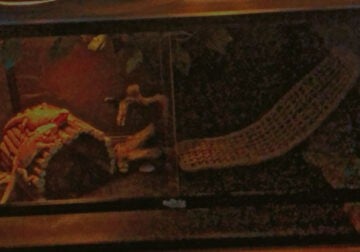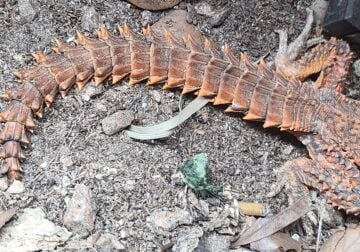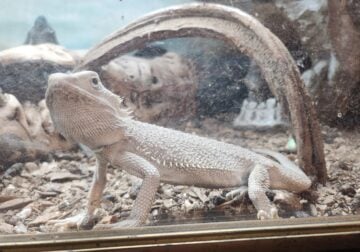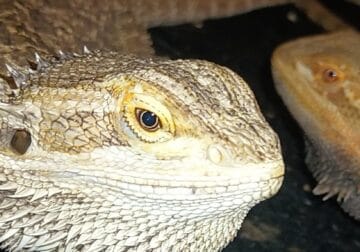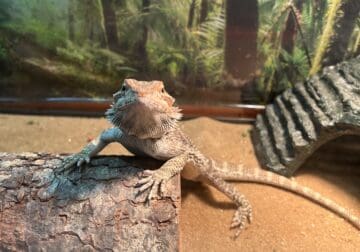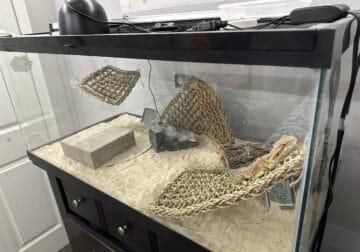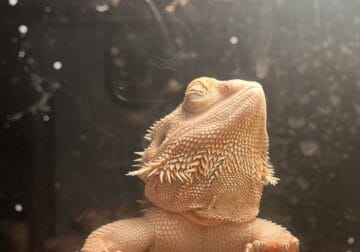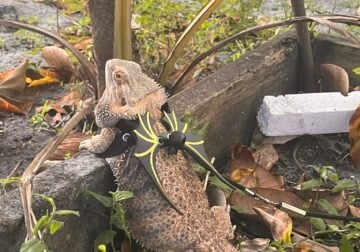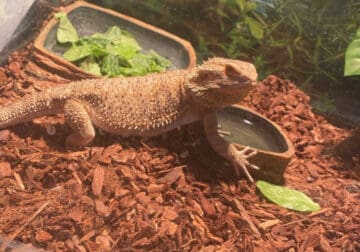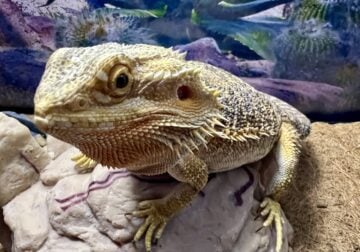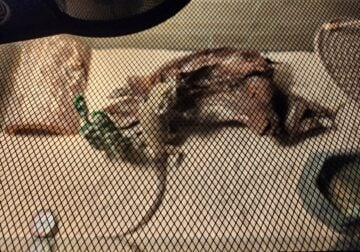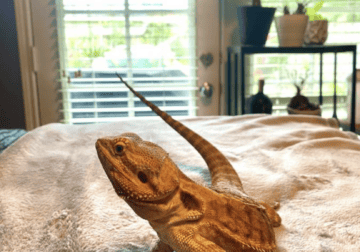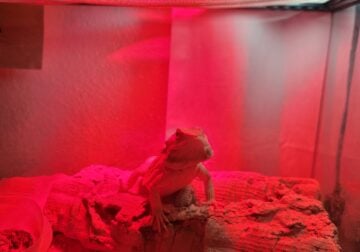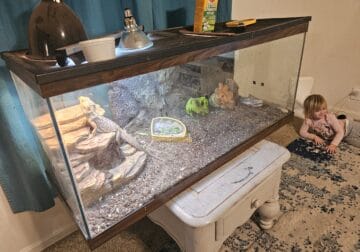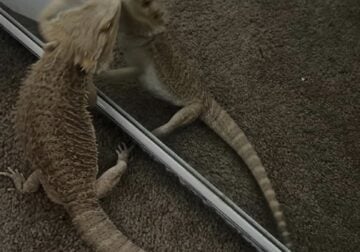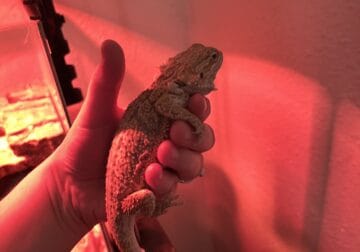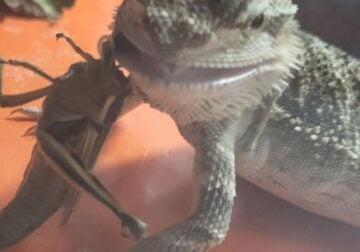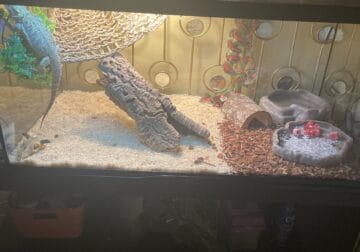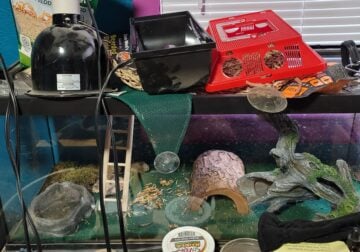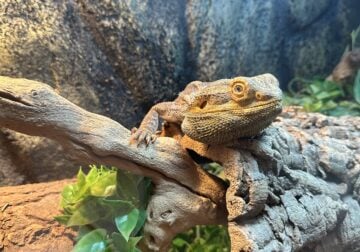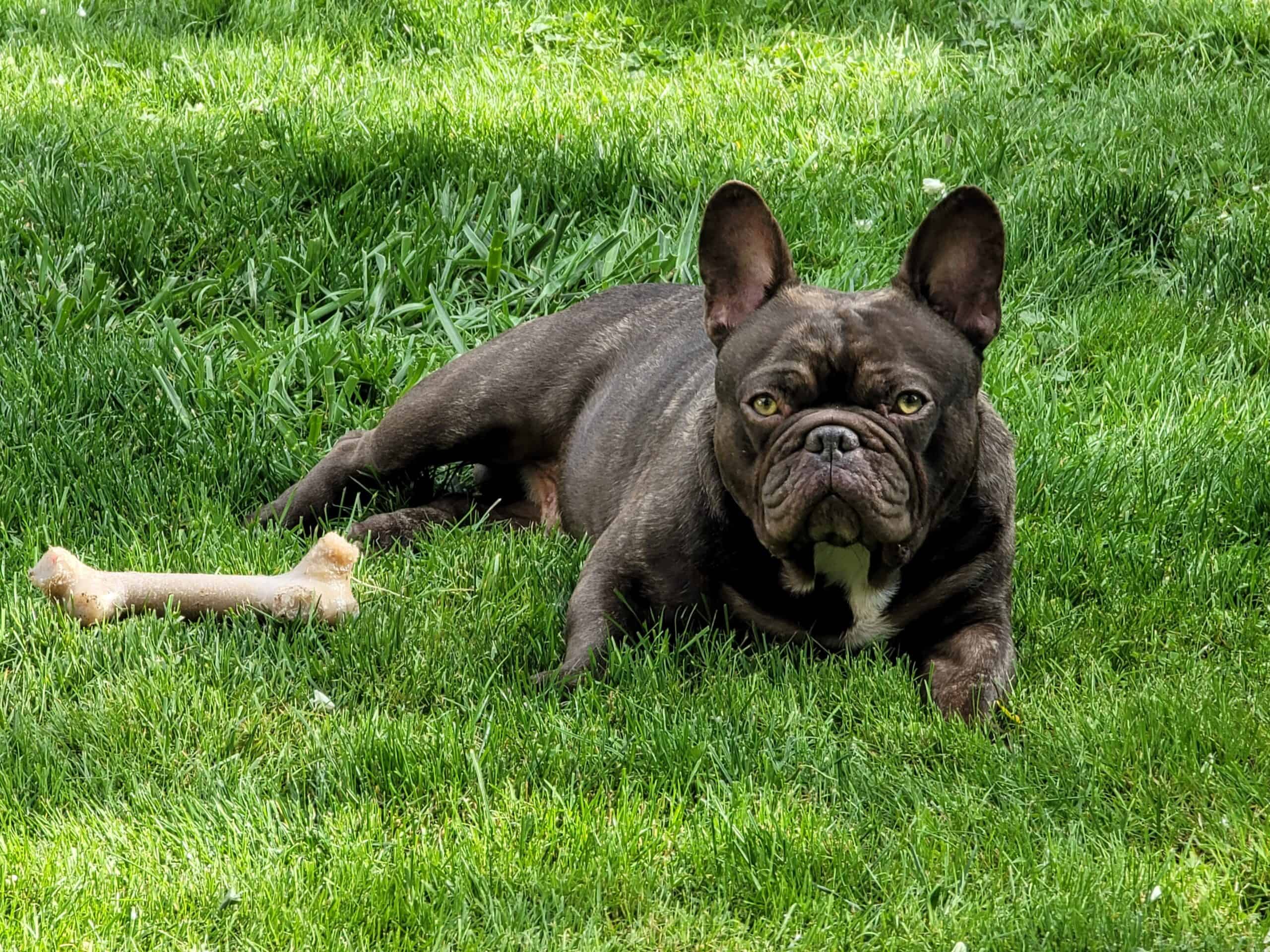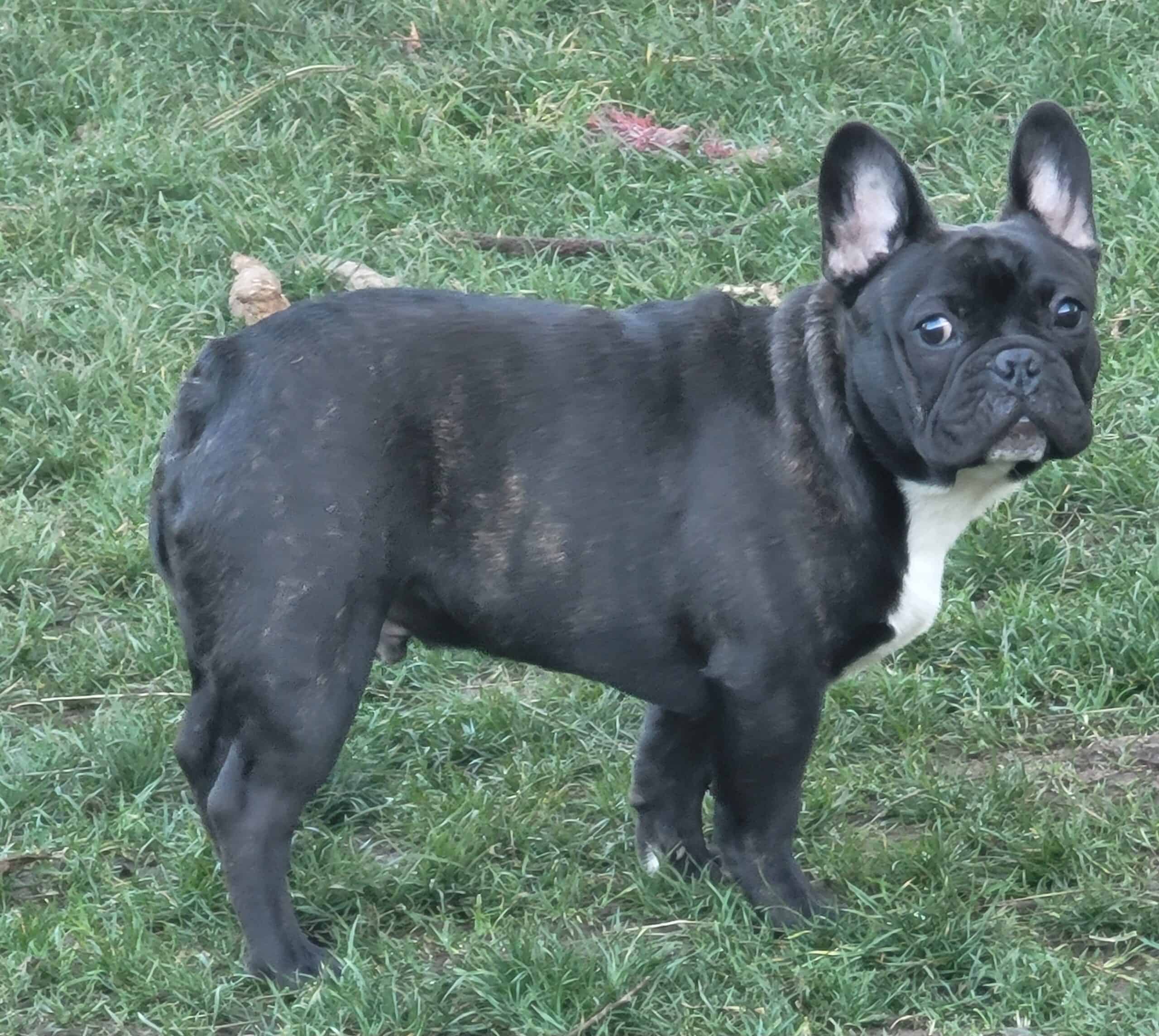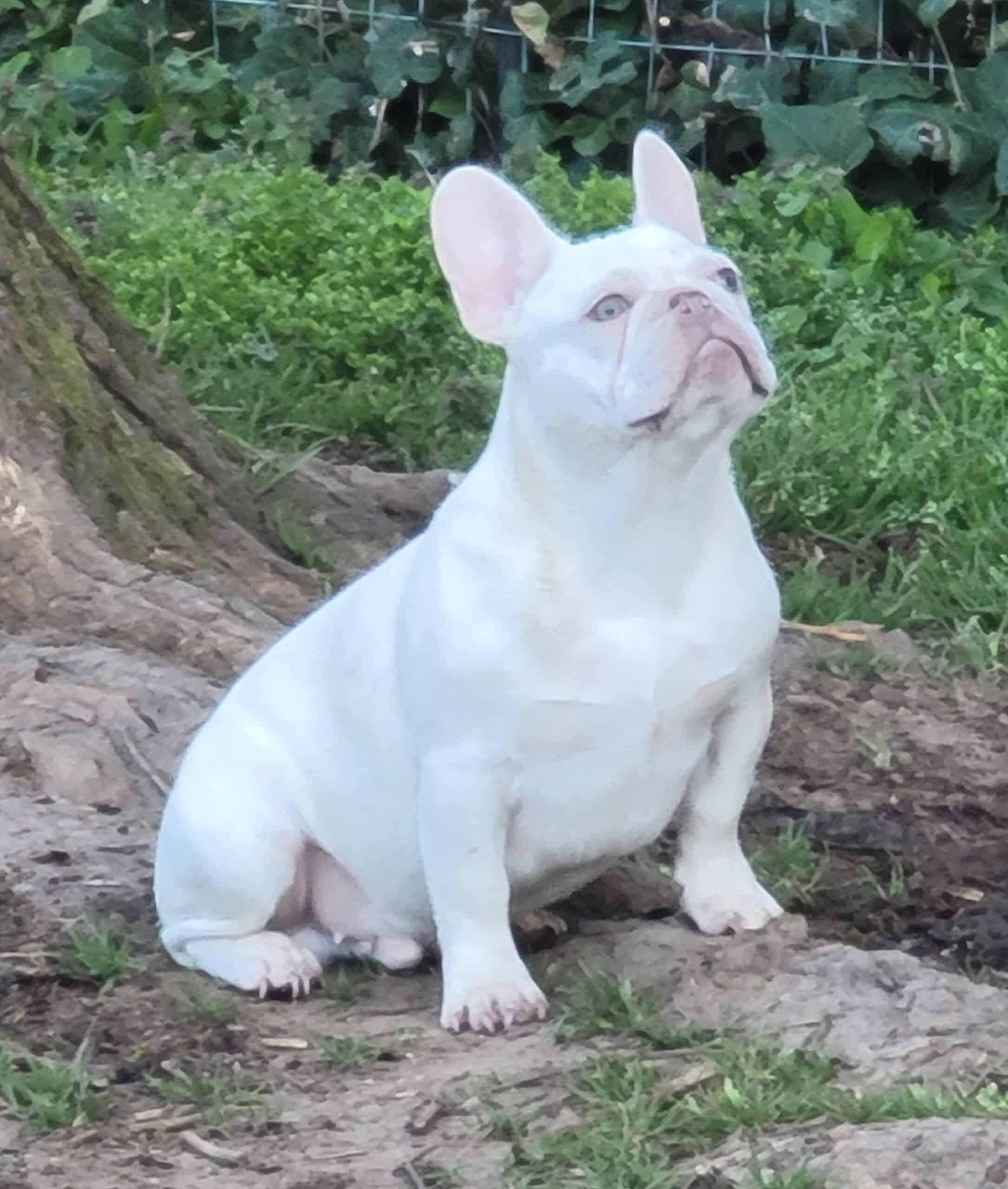2 bearded dragons with enclosure and all decor
Gautier, MS, USA
Bearded dragon for sale
Valley Village, Los Angeles, CA, USA
german giant bearded dragon
Pembroke Pines, 33023, United States
1 Bearded Dragon w/tank, lamp, water bowl, etc
Taylor, MI, USA
Bearded dragon and 75 gallon tank
Dundalk, MD 21222, USA
2 year old Bearded Dragon. Fun Loving kid and cat
Aurora, CO 80016, USA
Bearded Dragons for Sale: The World’s Best Reptile Friend
Bearded dragons for sale are among the easiest and most charismatic reptiles to own. With their friendly eyes and inquisitive natures, these lizards are charming as well as docile. They are even great pets for children who know how to be exceedingly gentle.
About Bearded Dragons
Bearded dragons are unusual and charismatic reptiles that vie with the leopard gecko for a place atop the most popular small lizard contest.
History
Bearded dragons entered the pet trade in the 1980s. They made it to Germany when smugglers transported them from their native land of Australia. The bearded dragons you see as pets as of 2022 are all captive-bred. Australia has strict laws forbidding the export of wild native animals from their continent. Fortunately for reptile keepers that fancy them, bearded dragons live and breed well in captivity. Bearded dragons, nicknamed beardies, arrived in the US around 1990.
Description
The bearded dragon is classified as a small lizard as it is under two feet long, including the length of the tail. Most pets are the central bearded dragon (also called inland bearded dragon) species. An expandable throat characterizes these lizards and gives them their name. The throat is lined with spikes and darkens when the dragon becomes excited. The head is roughly triangular with a ridge of short spines on the back edge and visible ear openings. A bearded dragon has three eyes of which two are traditional and sit on either side of the head. The third eye, called a parietal eye, only sees changes in light as it is covered by a thin layer of skin. It is located in the center of the beardie’s head. Bearded dragons are 16 to 24 inches long, of which 8 to 14 inches are comprised of the tail. Beardies have a broad and triangular head and a stout, rather flat body. The limbs and the tail are thick and sturdy for the reptile’s size. Spines adorn the body and legs.
Personality
Bearded dragons are appealing because of several aspects of their personality and behavior.
- Diurnal – active during the day
- Intelligent – demonstrate the ability to learn, including via imitation of other lizards
- Receptive to affection when socialized
- Docile and gentle
- Curious – like to watch you through the glass of their terrariums
Bearded Dragons for Sale Near Me
Most pet Bearded Dragons for sale belong to the species Pogona vitticeps. If you want a smaller beardy, you might consider a pygmy or Rankin bearded dragon (Pogona henrylawsoni). Mostly, variations of the inland bearded dragons are readily available. Such variants are called morphs.
Bearded Dragon Common Morphs
There are over 22 available bearded dragon morphs, although that number frequently increases. Color morphs are the most common and obvious, but there are also selective variants based on the type of scales and the pattern.
- White bearded dragon – pale gray to silver to white with no patterns; refers to zero and snow beardies
- Orange – four subtypes include tangerine,
- Leatherback scalation morph – smooth scales, only spikes along the sides of the body and on the head
- Blue bearded dragon – translucent beardy has a sandy-colored back with bars and a blue belly as a baby; rare for an adult to still have a blue belly, but these are blue bearded dragons
- Red bearded dragon – bright red-orange with sparse orange markings
- Zero bearded dragon – also a white bearded dragon, these beardies are gray (warm areas) or white (cooler areas) and often do not have any patterns; eyes are amber, so they are not true albinos; hypo zero refers to the whitest beardies
- Lemon fire – bright yellow
- Paradox bearded dragon – random patches of color; some blue and purple bearded dragons are paradoxes, the color describing their spots, stripes, or speckles
- Black bearded dragon – dark beardies with black markings exist, and they tend to darken with age; solid black dragons are rare; bearded dragons can turn black if they are cold, stressed, or upset; darkening is also common after brumation (hibernation) and when males feel dominant, territorial, or are looking for a mate (only the beard turn black)
- Witblit – earth brown to sandy-orange without any pattern
- Yellow – several subtypes, including citrus (yellow with orangish markings), citrus tiger (citrus with more distinct stripes), green (citrus baby bearded dragon retains its green color instead of turning yellow)
- German giant bearded dragon – about 26 to 30 inches long, much larger than a standard; only lives about four or five years and requires a 100-gallon tank
Hypo is used to describe a morph with muted colors from decreased melanin production. It can describe any color morph. When used in combination with terms that already describe an animal with lower melanin levels, it generally refers to an even paler individual than usual. Albino beardies do not exist, presumably because they have no melanin and thus zero ability to absorb UV light. True albinos would have white skin and red eyes. Leucistic animals have significantly lower melanin levels than standard beardies, but they are distinct from albinos because their eyes are pigmented. Zero, snow, white, witblit, and hypomelanotic bearded dragons for sale are all leucistic. Breeders often market white, snow, and zero beardies as albinos.
What to Look For
You can buy a bearded dragon from an online source, breeder, reptile trade show, or pet store. Some rescues also have a few dragons. Another source is someone who wants to rehome their lizard. Sometimes, if you adopt a beardie that was someone else’s pet, you also get the tank and some food. Many sellers are not able to provide a background for your dragon, but a breeder should. Only deal with a reputable breeder, asking questions on forums or researching review sites. Checking out reviews is also a good idea if you are acquiring your reptile from a pet store. Look for dragons that are active, alert, and bright-eyed. There should be no discharge from the nose or the vent. A slightly round abdomen is a plus. Bearded dragon babies for sale are usually four weeks or older before they are ready to go to their new homes.
Caring for Bearded Dragons
Beardies are among the easier reptiles to keep as pets.
Habitat
If you acquire a baby bearded dragon for sale, start with a smaller enclosure. Babies can become overwhelmed by an adult-sized tank, struggling to find food or their basking surfaces. However, adults need, at minimum, a 55-gallon tank or one that is about two feet x one foot. They are happier if you get a terrarium that is double that size. If you decide to house two beardies together, they require a 6-foot x 1.5-foot enclosure. The materials that comprise your pet’s enclosure can vary.
- Molded plastic – easy to clean but more expensive than the others
- Wood – difficult to clean; can customize
- Glass aquarium/terrarium – standard
Substrate
You should use about two or three inches of bedding on the bottom of your bearded dragon’s tank. Fine materials like sand make it harder for prey insects to hide and therefore are ideal for beardies. Alfalfa pellets work but can become moldy. Wood chips leave plenty of hiding places for insects. Carpet may seem an odd alternative for reptiles, but it is easy to wash repeatedly and reuse.
Heat Source and Humidity
Your bearded dragon can handle only narrow temperature ranges. It is best if you have two temperatures at either end of the tank, a cool side and a basking side. The basking side should sit at 90 to 100 degrees Fahrenheit. The cool side needs to be between 76 and 86 degrees Fahrenheit during the day and no lower than 71 degrees Fahrenheit at night. Humidity levels between 20% and 40% work best for bearded dragons. A thermometer hygrometer is an excellent piece of equipment to monitor temperatures and humidity levels. You should have one at both ends of the tank. You should also ensure that your dragon has one surface (rock or branch) that is appropriate for basking.
UV Source
Bearded dragons require an external UV source so they can absorb vitamin D3 from their food. Glass typically shields them from the UV rays that they need, meaning you have to provide a lamp. The light source should sit on top of the filter of your pet’s tank so the glass does not block it. It will get hot enough to burn any reptiles, so keep it out of reach of your beardy. You should provide 12 to 14 hours of UV light a day. A heating lamp can provide both heat and beneficial ultraviolet rays if you use UV bulbs. Some owners provide UV light at one end of the tank and heat at the other.
Cleaning
Thoroughly clean your bearded dragon’s tank once a week. This means removing the substrate and washing it with warm water or replacing it. Wipe down the glass sides and bottom and sanitize all feeding containers. You can clean visible waste daily, scooping poop and washing soiled rocks.
Feeding
Bearded dragons are omnivores. You should feed babies three to five times a day when they are under 15 weeks old. Between three and eight months of age, beardies should eat two or three times daily. Their food should consist of tiny crickets, and vegetables must make up 10% to 25% of their diets. Adults typically eat once a day. Vegetables, and to lesser extent fruits, should make up 30% to 60% of an adult bearded dragon’s diet. The rest should consist of gut-loaded crickets and mealworms, and young Madagascar hissing cockroaches. Go easy on mealworms and waxworms as they are high in fat. Gut-loading is the process of feeding insects a nutritious meal 24 hours before giving them to your beardie. Insects must be live to provide the nutritional benefits that your dragon needs. Your bearded dragon should be allowed to eat as many insects as it wants in a 15-minute period. You will then remove any remaining bugs. The list of vegetable options is endless with some examples below. Avoid lettuce as it has been known to cause diarrhea in bearded dragons. Spinach, a superfood for some animals, is also a no-no for bearded dragons as it leeches certain nutrients like calcium.
- Mustard and dandelion greens
- Carrots
- Parsley
- Sweet potatoes
- Squash
- Zucchini
- Chard
- Fruits – melons, berries, apples
Bearded dragons usually also need a dietary calcium supplement. You should keep in close contact with a professional well-learned in reptilian nutrition to formulate the best diet for your beardie.
Exercise
Beardies do not need much exercise. If their tank is large enough, they will get enough exercise on their own. Hiding places and decor can make their habitat more interesting, providing the mental enrichment that is often lacking for captive exotics. Beardies can learn to walk on a leash, and some enjoy swimming. These activities are excellent to break up the day for your bearded dragon and get it out of its “cage.” Keep walks brief because your dragon is sensitive to even small temperature fluctuations.
Handling
Unlike other reptiles, bearded dragons readily become socialized with regular handling and seem to enjoy interacting with people. However, bearded dragons will become stressed if you handle them too much. Remember that a little attention goes a long way for reptiles. Holding your bearded dragon gently and petting it for 10 to fifteen minutes a day is sufficient to give it time outside its enclosure and keep it accustomed to you. You should start with only a couple of minutes daily and gradually work your way up to several minutes once your dragon gets more comfortable. Finally, each bearded dragon is a little different, and you must gauge how extroverted or willing your bearded dragon is to engage. You will also get a feel for how long your Beardie can tolerate contact before getting stressed. Wait about two weeks after you bring your dragon home before you start trying to handle it.
Companionship
Bearded dragons should be housed alone as they are solitary creatures. The males are especially territorial and will display dominance by head bobbing and laying atop the more submissive animal. They can also get into nasty fights. You can place a male and female together during breeding, but otherwise, keep them separate. Males can be either hostile or relentless in their obsession with a female. Such encounters lead to a stressed-out dragon.
Water
You should provide water for your dragon in a shallow bowl at the bottom of its tank. If your beardie likes to wade or swim, you can bury a deeper bowl part way in the substrate. You must mist your beardie dragon about every other day to keep its skin hydrated. When your dragon is shedding, it can benefit from a shower.
Lifespan
Bearded dragons are healthy, living eight or nine to fifteen years.
